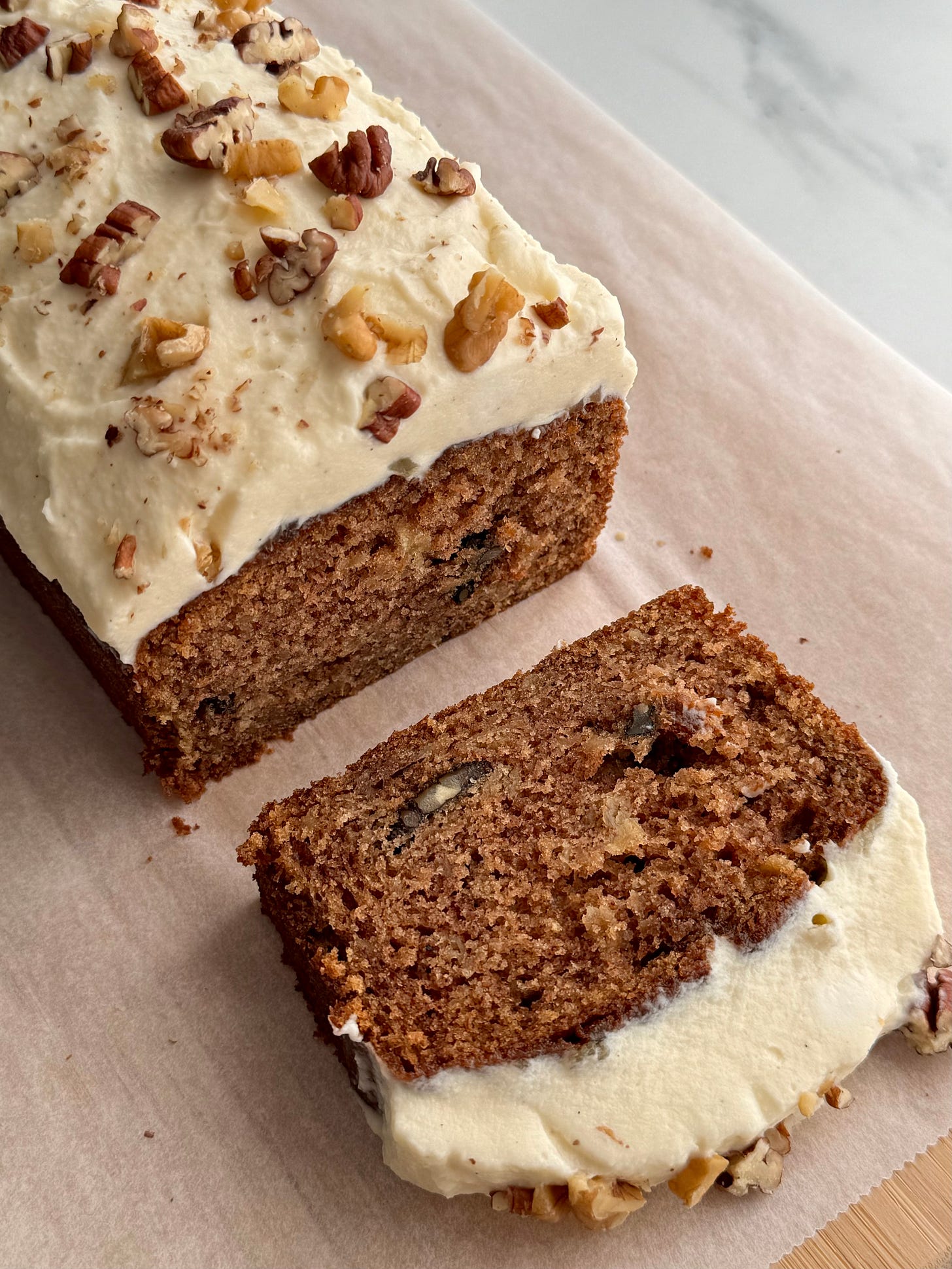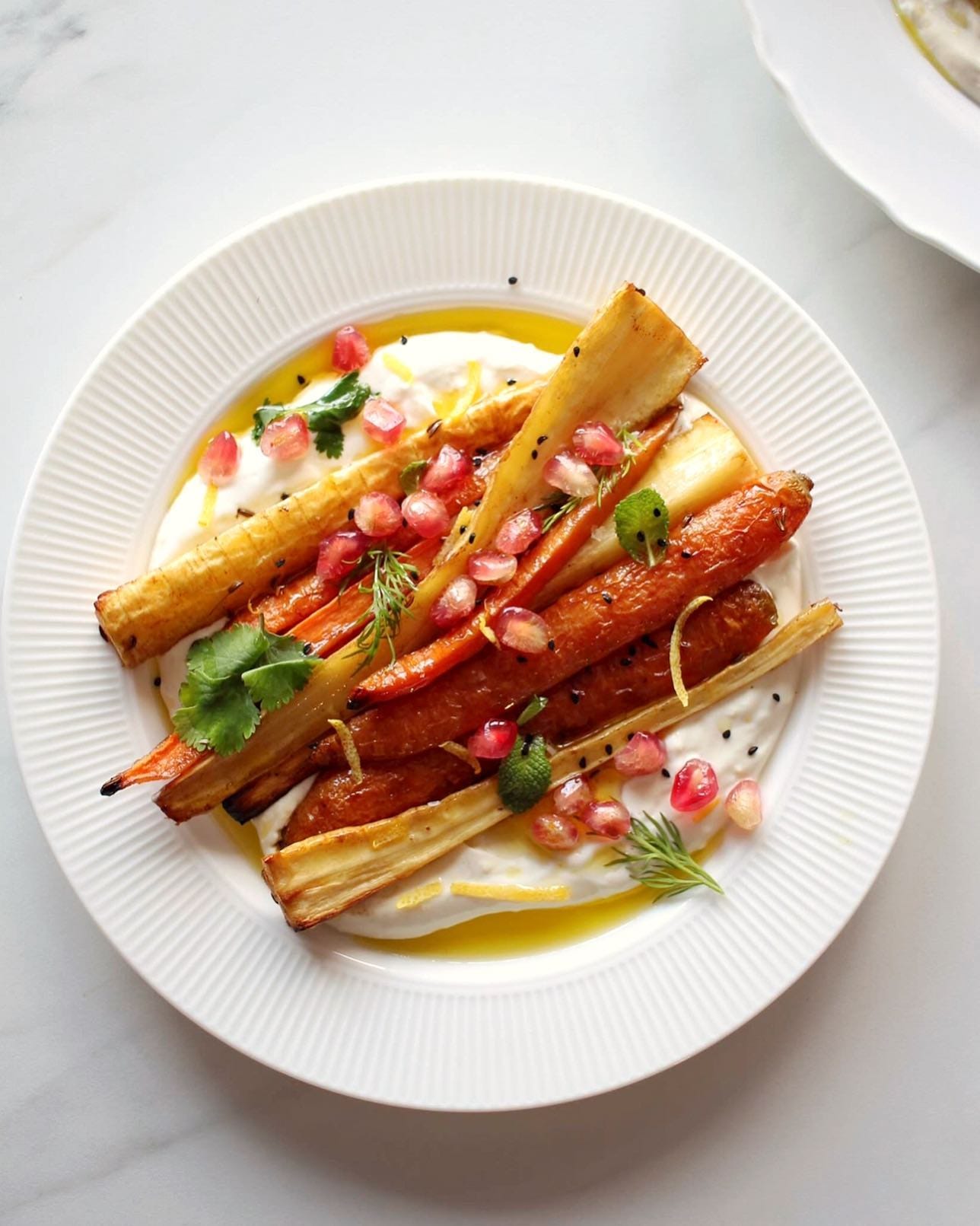👋+: Spiced Parsnip Loaf with Mascarpone Cream
meet carrot cake’s sexier cousin
Allô! 👋
Hello! Welcome to the seasonal sundays section of the good food at home newsletter. This is a weekly-ish paid supplement that aims to provide simple recipes for those seasonal ingredients that may sometimes elude or confound us in the kitchen. The main newsletter will always be free, but by subscribing to seasonal sundays you will not only be able to access extra recipes + the full archive, you’ll also help to support all the researching, cooking, documenting & writing that goes into sharing this newsletter with you. If you’d like to be a part of a growing community and show you value this work, subscribing is easy and costs less than £2 per week (less than £1/week with an annual subscription or free if you refer some friends, and the first 7 days are always free)! Why not give it a shot? We’d love to have you 💛
Parsnips! Not to be confused with parsley root (also a long, snow-hued taproot that bears resemblance to a milky carrot), the unpresuming parsnip is one of few vegetables that are in season during the hungry gap — that time of year during which most cellared vegetables and fruit have either run out or are too far past their prime and, at the same time, most new-season crops have barely begun to grow out of their seedling stage.
While parsnips are often associated with autumnal produce, their season actually extends to early spring thanks to their resistance to (and, dare I say, their affinity for) cold temperatures (they might actually be the hardiest of frost-tolerant root veggies!). In addition to keeping well for a very long time if stored properly*, parsnips also tolerate spending time in cold soil extremely well.
Like many other cold-hardy crops, parsnips can survive over winter by defending themselves from biting frosts through a process that involves breaking down stored starches into sugars. For us, this means that in places where the climate is mild enough or crops have been protected from extreme frosts over winter (hardy crops can only tolerate the cold up to a point), early spring brings with it even sweeter parsnips than fall — fresh from the ground.
*up to 6 months in a root cellar!
If you haven’t tasted parsnips before, I would describe the flavour as sweet-yet-earthy, with what I can only describe as a sort of nutty liquorice spice afternote. The texture is a little drier than that of a carrot, and somewhat more starchy too. Like carrots, however, you can eat parsnips raw — though for a parsnip newcomer they might be a bit too strong to bite into uncooked, Bugs Bunny style. Instead, a parsnip remoulade made with fresh grated parsnips might provide a better introduction to the root… or, better yet, why not try them baked into a cake?
•••
This week’s recipe invites you to use parsnips in your baking, as you might with carrots or beetroot. At its most basic, the cake below is meant to be very shareable and easy to transport. However, I’ve also provided two further suggestions for upping the baking ante: the first includes a glaze and aromatic topping, and the second a flavoursome frosting with some additional crunch. Both steps are entirely optional, but if you’re trying to open others’ minds to the possibilities of parsnips’ applications in baking, I do find that glazing and frosting the cake makes it all the more irresistible to anyone who’s kindly been offered a slice.
spiced parsnip loaf cake ✨
If you like carrot cake, you’ll probably love this parsnip cake. If you like ginger bread, you’ll probably also love this parsnip cake. That’s because this recipe is inspired by both carrot cake and Norwegian “krydderkake” (spice cake), with the extra twist of using parsnips instead of carrots as I find they impart a more delicate sweetness to bakes, as well as pairing better with the flavour profiles of nuts and sweet, warming spices. That being said, if you’d rather make this cake with carrots, you are very much welcome to do so (simply swap them out in a 1:1 ratio).
•••
INGREDIENTS
Keep reading with a 7-day free trial
Subscribe to good food at home to keep reading this post and get 7 days of free access to the full post archives.








